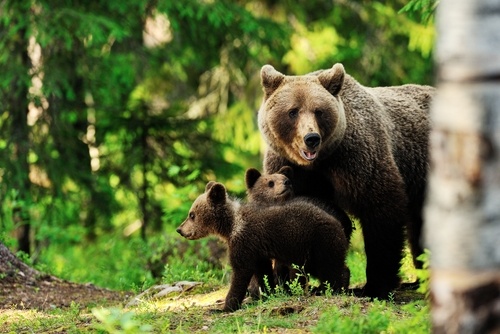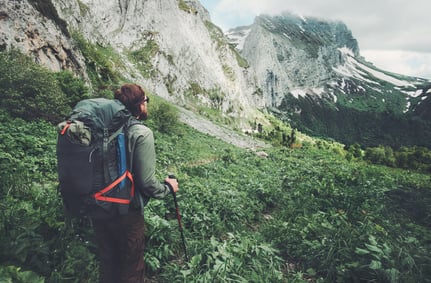Like all Alaskans who spend any time outdoors, I have had my bear encounters…many of them right here in the Anchorage woods. One time I was walking in North Bicentennial Park (Bear Central Park) with my friend Rosie and engaging in some mindless chit chat, when Rosie abruptly interrupted me with a low-toned, ominously simple warning, “Barb, a bear.” 
One thing I’ve noted about these Alaskan bears, is that they all look astoundingly healthy. Their coats are beautifully thick and glossy because they eat abundant quantities of fresh protein, without any artificial additives or hormones infused into them. Most of their protein comes from Alaskan salmon a wonderful source of the Omega three fatty acids.
They consume enormous amounts of grasses, plants and love blueberries along with a wide variety of other berries. In fact, on a hike with my friend Patti to the Twin Peaks by Eklutna Lake, we learned quickly that bears enjoy using the same trails as humans to reach the upper fields of blueberries. I’d be loath to get in their way. I won’t mention their other sources of protein because it breaks my heart to think about it. But I do think there is a lesson to be learned from the Alaskan wild on healthy living. Their sources of food are pure and raw, their protein sources are of the highest quality and these animals are always on the move. Good health habits we would all profit from.
The beavers teach us to be hospitable as they invite other species into their multi-chambered homes in the winter. People who socialize are less likely to suffer from depression and better acclimate to life’s stressors. Some ducks have mates for life. Married humans live longer than those who are single. Moose (like most animals) are fiercely loyal to their young, a disconcerting revelation for many dog walkers, but a good life lesson for families. The Bald eagles we see here perched on trees surveying the situation below them, have a sharp eye for prey. Humans who have higher education and high earning potential, likewise live longer. Wolves are remarkably able hunters because their senses are so keenly attuned to their immediate surroundings. Bears can smell blood up to three miles away. People who are well trained in mindfulness techniques, yoga and meditation are calmer and can respond better to life’s challenges.
There is a lot to learn from Alaskan bears, foxes, moose, beavers, porcupines, eagles on living healthy: eat pure, maintain hydration, get your roughage, stay on the move, be vigilant and stay in the now. Next time you see one of these noble critters, thank them for the valuable life lessons they teach us.
Always remember to prepare yourself when hitting the trails. Bring plenty of water, extra clothing, snack food – we recommend energy bars, and comfortable hiking shoes.
Learn how you can train for this summer’s outdoor activities indoors at thealaskaclub.com.


